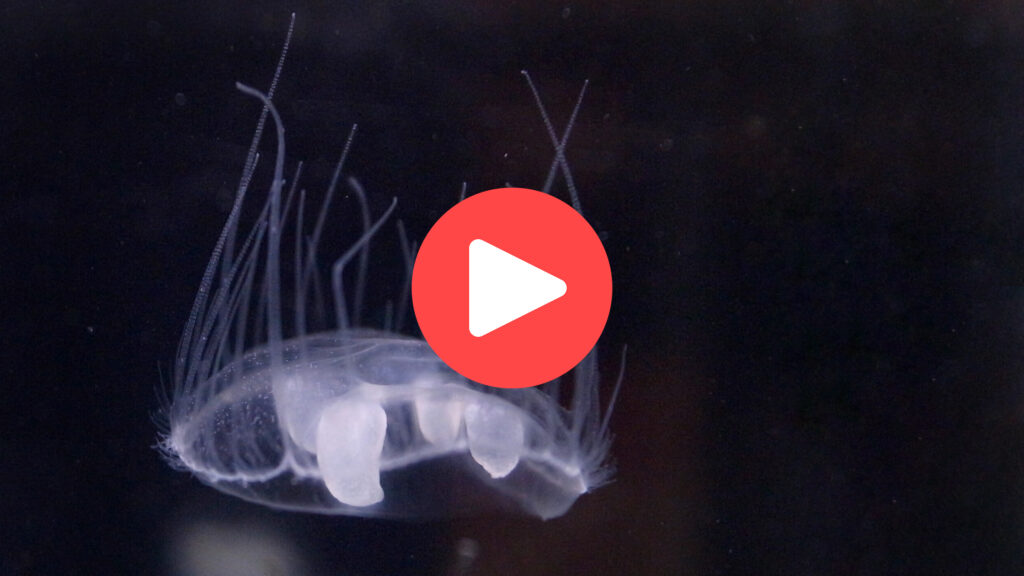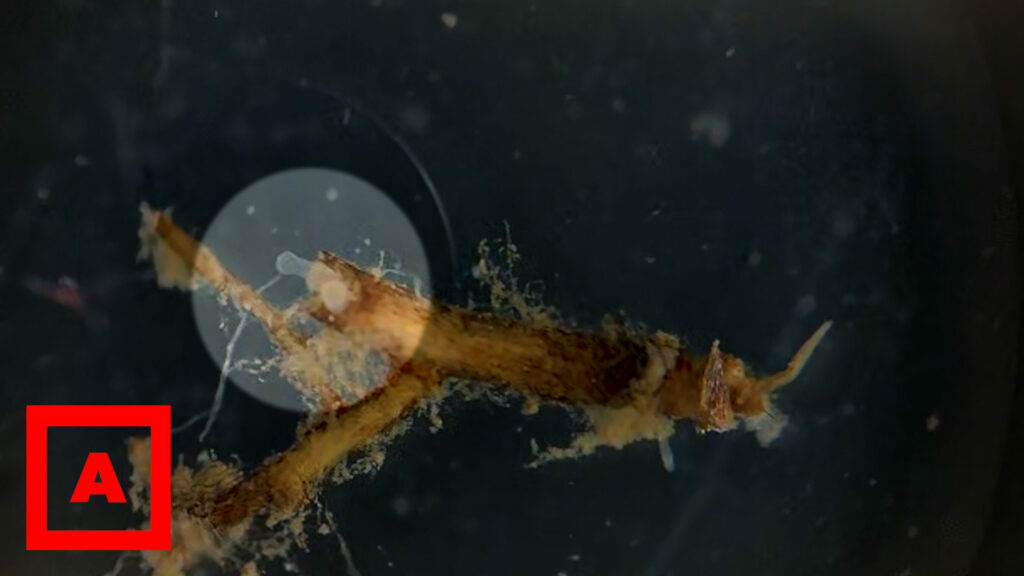The https://english.atlatszo.hu use cookies to track and profile customers such as action tags and pixel tracking on our website to assist our marketing. On our website we use technical, analytical, marketing and preference cookies. These are necessary for our site to work properly and to give us inforamation about how our site is used. See Cookies Policy
Invasive freshwater jellyfish from China appear in the Danube – a symptom of something bigger
The species – known to those who know as Craspedacusta sowerbii – originates from China and is not native to the region. It thrives in warmer waters, which means the ever-rising temperatures due to climate change are ideal for its spread.
Ecologist András Abonyi is stood under a large willow tree on the banks of the Ráckeve-Danube. He is equipped with a camera and a microscope and a petri dish. He has glasses, a crisp red polo. He leans over the water, scoops up small plant fragments. He’s concerned.

“According to our research group’s observations, the polyp form of the freshwater jellyfish is more frequently found on the roots of the willow tree,” he explains. “We examine these root fragments and the coating on them under a microscope.”
The researchers want to learn more about the non-native species’ lifestyle and its impact on local ecosystems.
We set up a makeshift observation station by a log bench, using a microscope to observe the animal. At first glance, it doesn’t appear to be a jellyfish at all. We are viewing it in its polyp form, a life stage where the cnidarian is just a few millimeters in size—so small that it is invisible to the naked eye.
Under favorable conditions, this polyp transforms into a jellyfish form. It grows to about 2 or 2.5 centimeters in size, which is how vacationers spotted the phenomenon in Fadd-Dombori.
The jellyfish form requires relatively high water temperatures – at least 25 or 26°C – and standing or very slow-moving waters to develop.
Until recently, the Danube boasted none of these conditions.
Thus far, the freshwater jellyfish has been seen primarily in the Danube’s side channels, oxbow lakes, ports, and reservoirs— all environments impacted by human activity.
In Hungary, sightings have occurred in the Ráckeve-Danube branch and, according to teol.hu, recently in the Fadd-Dombori oxbow lake just below Paks. In Vienna, freshwater jellyfish have frequently been found in the Alte Donau, a lake created off a former Danube branch, and in the Neue Donau, an artificial Danube channel established for flood protection. The Neue Donau is usually a standing-water ecosystem, with its gates opened only during flood events.
Abonyi, an ecologist at the HUN-REN Ecological Research Institute, explained that the jellyfish needs standing- or slow-moving bodies of water because it feeds by rising to the surface of the water and then slowly sinking back down.
“Because it is a gelatinous, fragile organism, it could not perform this process in a rapidly moving or turbulent environment,” he noted. “It is therefore unlikely that it will spread to the river’s main channel.”
New invertebrate, who dis?
The freshwater jellyfish is a predator. It feeds on animals like fish larvae, tubifex worms, and zooplankton.
According to Abonyi, we currently have limited understanding of the exact impact of the jellyfish on the entire food web – but signs suggest there is a definite impact. The jellyfish may contribute to the proliferation of algae by consuming the zooplankton that feed on these algae, according to the research team.
The jellyfish, it is important to note, is not a threat to human health. Its presence may, however, lead to increased algal blooms, including species of blue-green algae that can produce toxins harmful to the nervous system and liver.
The species originates from China – the Yangtze River region – and was introduced to Europe in the 18th century, primarily through imported aquatic plants in botanical gardens. The first recorded observation in Hungary was published in 1960, when the species was found in the Drava near Őrtilos.
Although it has been present for some time, its visibility has increased recently due to warming waters.
According to data from the Hungarian water management authorities, the annual average temperature of the Danube River in Hungary was around 10°C in 1965. By 2022, the river’s annual average temperature had risen by around 3.5°C. This warming trend is not unique to Hungary; similar increases in water temperatures have been observed across Europe, from Kienstock in Germany through Bratislava in Slovakia to Novo Selo in Bulgaria.
The increase in air temperatures accounts for about 80 per cent of the rise in water temperatures. Other human activity, such as the discharge of warm water from power plants into rivers, also contributes to this phenomenon.
River regulation risk
The Danube is a significantly human-influenced river, having lost its naturally connected floodplains and oxbow lakes. The less frequently a side branch connects to the main channel—due to alterations in water flow or increasing instances of low water levels—the more favorable the conditions become for jellyfish, according to the expert.
The combined effects of climate change and environmental degradation have taken the form of the jellyfish.
But the significance of river regulation extends beyond just the appearance of jellyfish. It is linked to the drying of regions such as the Great Hungarian Plain and the Danube-Tisza Interfluve.
Abonyi emphasized that river regulation is responsible for this trend. The issue is considered to be a major environmental concern by professionals in the field.
It is time, perhaps, to panic.
Story by Orsolya Fülöp – Video by Gergely Pápai. Translated by Vanda Mayer.



